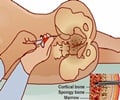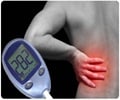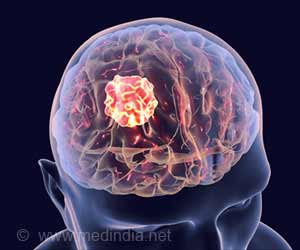A severe developmental disorder called CHARGE syndrome affects multiple organs and occurs in 1 in 8500 newborns worldwide.

CHD7 encodes a so-called chromatin remodeler, an important class of epigenetic regulators. DNA is wound around bead-like nucleosomes consisting of histone proteins. The string of beads is then twisted into a structure called chromatin. The more nucleosomes that occupy a gene, the less active it is. Chromatin remodelers like CHD7 are essential for the regulation of gene activity because they create nucleosome-free regions in the regulatory sequences of genes. Thus, a mutation in a gene coding for a chromatin remodeler may lead to a wide pattern of misregulated genes.
Dr. Haikun Liu's lab at the German Cancer Research Center (Deutsches Krebsforschungszentrum, DKFZ) is interested in the regulation of adult neural stem cells. The scientists have a particular focus on the role adult neural stem cells play in human diseases, including mental retardation and brain tumors. CHARGE patients suffer from mental retardation and learning disabilities, strongly suggesting that a central nervous defect underlies the disease.
To understand the molecular role of the CHD7 mutation in the CHARGE phenotype, the researchers created a model using genetically modified mice. These animals permit the scientists to switch off the CHD7 gene uniquely in neural stem cells at specific developmental stages. This permitted the scientists to follow how CHD7-deficient cells proliferate, differentiate and mature over the entire lifespan of the animal.
The work led to an exciting finding: by switching off CHD7 in either fetal or adult neural stem cells, the scientists observed that the mutant cells behaved in a common way: They could not efficiently differentiate into mature neurons, which are the basic functional unit in the brains of humans and other animals. Mature neurons normally have a very complex morphology, allowing them to create networks in the brain which are important for processing information. Neurons with the mutant form of CHD7, however, seem to be incapable of forming networks.
Most strikingly, Liu and colleagues found that exercise fully rescued this phenotype in the hippocampus, the core region of the brain responsible for learning and memory. They allowed the CHD7 deficient animals to exercise on a running wheel, which rodents love to do. After the running exercise the CHD7 mutant neurons were fully rescued: They were able to create functioning networks.
Advertisement
CHD7 is also an important cancer-related gene; many different types of human cancers, including lung cancer, colon cancer and brain tumors exhibit mutations in the molecule. The mechanism identified here provides a clear explanation: A mutation in CHD7 leads to a blockage of differentiation in stem cells, which is a major cause of tumorigenesis.
Advertisement
Source-Eurekalert













